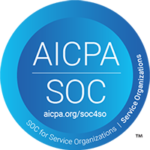

Although the primary type of influenza this season is not a new strain, last month it claimed 4,064 lives in one week. The nationwide outbreak shows no signs of letting up. That means potentially millions of Americans will be diagnosed and likely prescribed flu medication in the coming weeks.
Given that one in four Americans doesn’t fill a prescription due to cost, it’s no wonder flu season is a public health crisis. What most don’t know is they have choices for that important medication.
Choose Your Therapy
If you get the flu, you have three options: Tamiflu¨ or its generic, and Relenza¨. Here’s the unfortunate reality: Similar to EpiPen¨, Tamiflu enjoys such widespread brand recognition among the public and the medical community that its lower-cost alternatives hardly receive mention. This is no accident.
The list price for Tamiflu (ten 75 mg capsules) is $180, or $155 for generic Tamiflu (oseltmavir).
Looking at the data we receive at Rx Savings Solutions, member and plan prices for Tamiflu are literally all over the map, depending on state, plan design, formulary and the pharmacy where it is purchased. Thus far in the flu season:
- Members paid anywhere from zero to $160 for the most popular Tamiflu dose
- Plan prices ranged similarly from zero to $150
For generic Tamiflu in the same dose:
- Members paid from $10 to $83
- Plans paid between $30 and $106
Relenza (zanamivir), an inhaler, lists for $60. Rather than two tablets per day for five days, the patient inhales two pumps. In our same claims comparison, members and/or plans paid a consistent $60 for Relenza, yet it amounts to a small fraction of total influenza therapy claims.
Efficacy and side effects are very similar to Tamiflu; in fact, Relenza has shown to reduce fever more quickly. I would recommend it to my family, even if paying cash.
Act Quickly
With either drug, timing is critical. Antiviral therapies have the best chance of success if taken within the first 48 hours after the onset of symptoms.
Treatment should not be delayed while waiting for test results, nor should it be withheld in patients with indications for therapy who present 48 hours after the onset of symptoms, particularly for patients requiring hospitalization.Most importantly, lack of—or delays in—treatment should never result due to cost.Keep in mind the price that a consumer incurs at the pharmacy counter will differ for all of us based on a variety of factors: deductibles, preferred pharmacy networks, and formularies are just some of the variables.Knowing the specific therapy options and the prices available through your own health plan is critical. It’s not just about saving money. It’s about ensuring that consumers know they have a choice at the counter.



